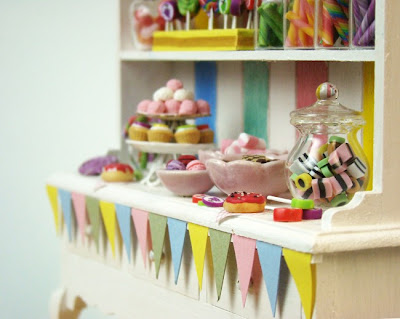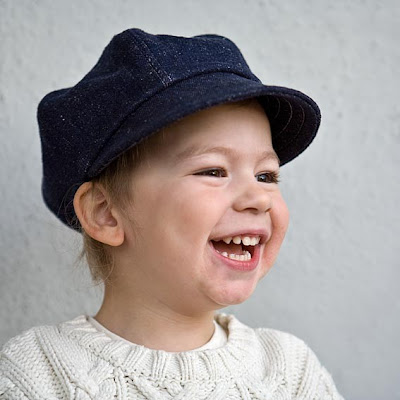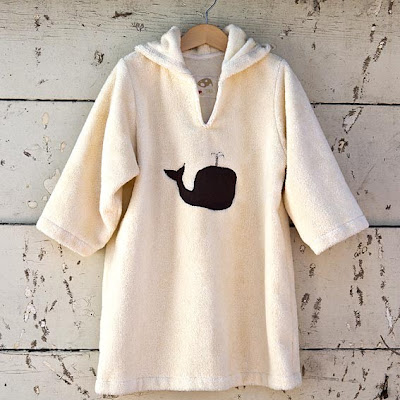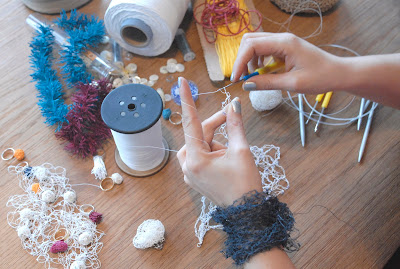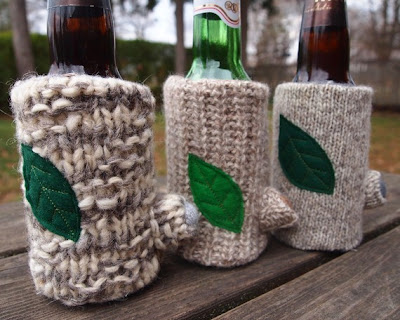As I watched my nearly-four-year old daughter paint her version of a world map recently (after having been engrossed in the atlas most of the week), I started thinking about how the seeds of creative thinking, and artistic expression are planted. How inspiration for future, artisanal work begins. Where. Who. How.
So I did what I usually do, and ask some of the artisans whose work I love, and am privileged to share with on the Artisans Gallery team.
(handmade wooden star wands, above, from ImaginationKids)
Today, I start off this new series with Linda, from PaperPhine.
"One my favourite things to delay bedtime as a kid was to get out one of the numerous craft books and start a project that would obviously not be finished by the time the grown-ups considered to be bedtime. Luckily, there were a lot of craft books and a seemingly endless supply of materials in my parents' house thanks to my Mum who was always working on something and still is nowadays. So these books were definitely a shaping influence early on and the older I got the more sophisticated the books got."
"When I was about 14 years old I bought the book Paper: Making, Decorating, Designing by Beata Thackeray and I was hooked. Setting up a paper making workshop in my parents' basement, kitchen supplies and gadgets started to disappear suddenly and sometimes turned up again covered with paper pulp and glue.
Anyway, I was hooked on paper, my library on the subject grew constantly and I did internships with European papermakers and paper artists. When I went to Art University I was quite disappointed that the staff teaching paper making had not really any in-depth knowledge on paper making and therefore I concentrated on the new fields that were to discover: diverse textile techniques and skills. When paper yarns appeared in my life thanks to a dear friend somehow everything fitted together nicely and became even more exciting.
Even nowadays books are extremly important for my work as inspiration and guides to new techniques and ideas. The library is forever growing and one day I'll probably need a whole room just to store my books in. Exhibitions and talks with fellow artisans and artists are probably equally important for my work but it's books that are a recurrent theme through my life and work."
(all photos, above, from PaperPhine's lovely shop)
roots of design, part 2
Today is part 2 of our ongoing "inspiration" series on this blog. A series where we look at what influenced artisans among us to become what we are today, what helped inspire us along our path of creativity.
(photo, above - all and all photos below - from LaLashoes here)
Daria, the artisan and industrial designer behind LaLaShoes, offers us a beautiful glimpse into what helped to shape her way of thinking and her approach to design and creativity. Thank you, Daria, for taking the time to share such a moving series of memories and insights with us. Your post really made me think and consider the contributions of those close to me. I'm sure it will do the same for many of our readers.
In Daria's own words:
"From my father and my maternal grandmother I learned the most valuable lesson regarding my creative life - 'What you want but can't have or afford, you can make yourself! And it's much more fun doing it yourself too!'"
"Actually, they never told me that directly, but I learned that from both of them when I was very young. My grandmother was always making clothes and dolls for us. I enjoyed spending time with her and learning to sew and knit. I also enjoyed all the stories she told me about how she made trendy woolen coats for my mother and her friends out of woolen blankets, and nobody ever found out (early '50 poverty!), and also all her dancing dresses and everyday clothes. Among other things, I learned to make doll dresses out of scraps or used garments, and to re-use the wool from sweaters I outgrew."
"My father was always making things. He used to do wonderful sketches every evening for all the things he wanted to make, solving the technical problems, dimensions, everything. There was always a big pile of books on his side of the living room table - mechanics, physics, the Technical Encyclopaedia volumes, books on architecture, Neufert's Ergonomics (that I eventually used myself at university)...
...He spent most of his free time in his workshop in the attic, making stuff out of anything - he would reuse all kinds of pipes, wooden pieces, tin metal sheets… you name it. There was basically nothing he would thought of that he couldn't make. He liked to make his own improved versions of tools too, or design tools that he needed but didn't exist yet."
From him - from my father - I learned to solve things logically, applying math and physics, searching for answers in books, to think through sketches, to recycle and reuse any kind of material to make what I wanted.
I don't remember him ever making a toy for me, but I think that's because he knew I was able to make my own - I was always hanging around in his workshop and asking for tools. My father would always answer my questions about how to make something better, or lead me through some basic technical problems, usually challenging me to make even better versions of my own designs. I learned a lot just watching him working. Dad also learned to sew as a child; I got my first sewing machine from him as a gift.
My dad made our house - from a blueprint, through a scaled model we still keep as memory, all the way up to the roof. He made also a special crane from an old ship motor engine to help him get the materials high, as the house was growing. If you can learn to design and make a house, the sky is the limit, right?
From all that, I really learned that there is nothing you can't do if you apply yourself, if you're willing to learn a lot and if you're creative. That's something I consider invaluable. Thank you nonna and dad for this wonderful gift!
Thank you so much for sending in all of these beautiful stories and ancedotes of early artistic inspiration. This series will now go live with a new artist every Monday, and every Thursday.
(photo above, watercolor print by silverridgestudio - and all the photos that follow are from Cate as well)
You can see the first posts here:
• the seeds of creativity with Linda from PaperPhine
• roots of design with Daria from LaLaShoes
Today, we are treated to some of the first creative memories of Cate, the artist behind silverridgestudio, whose work was recently featured in Lucky Magazine. She says her current inspiration "comes from many places. Ealing Studios, French and Italian Cinema, along with music, theatre and dance." Thank you, Cate, for sharing with us what some of your earliest creative sparks were.
"My first memory of drawing was at my Grandparents. I was fascinated with an architecture book that belonged to my Granddad. I spent most weekends staying with them so I used to copy pictures of windows and doors for hours out of that book."
Here are some photos from Cate's busy studio, which is in the garden area of her L.A. home.
A few weeks ago, we began this series by asking artisans about the seeds of their inspiration and the roots of their design.
(photo above, of Monica's rustic silver heart necklace - all photos that follow are frommoonovermaize as well)
In part 4 of the series, Monica from moonovermaize shares beautiful insight into her own creative path. And the patience required to find her way. I love this quote about patience by Edward Bulwer-Lytton: "Patience is not passive; on the contrary, it is active; it is concentrated strength." Indeed.
"For me, it was not a specific moment, but a conglomeration of artistic attempts gone wrong. I was always trying out different forms of art growing up from drawing to painting to sculpting to making mosaics and sewing. Seeing as my Mom is an incredible seamstress I thought it would come naturally....I was so wrong on that one!"
Monica is pretty sure she "tried nearly every art/craft under the sun and I was always left a bit disappointed as the final product never came out as I had envisioned it. It has never stopped me from searching though and then I tried out some metalsmith techniques about a year ago and I had finally found what I'd been searching for!"
"It felt right. My hands could manipulate the tools and supplies to form exactly what was in my mind. Now that I've found what I love it is a matter a perfecting techniques and allowing myself to grow in this line of work. Seeing as it took some patience to get to this point I believe it has also taught me patience in my art of metal work."
Like a Kid in a Candy Store, Roots of Design, Part 4
In part 5 of our series on the roots of design + creative inspiration, we take a closer look at how childhood art experiences can help to shape one's artistic path much later in life.
(photo, above, of a miniature clay candy cupboard, and all photos that follow are from PetitPlat)
(photo, above, of a miniature clay candy cupboard, and all photos that follow are from PetitPlat)
Today, Petit Plat's Stéphanie shares some of her creative inspirations as a child and her sheer joy at exploring different media around her. Thank you so much for uncovering some of the background to your beautiful miniature art.
Stéphanie loved "drawing houses as a kid and in the roof I always imagined a tiny private play park, with a swimming pool and many stairs which took you to different thematic rooms.
So the roof was a bulky potato on top of a normal house. Way cool."
"I used to make miniature food out of clay for my Barbie dolls. I could spent hours redoing all of the plastic toys I got from Barbie (I only had all pink turkey, all pink cakes and all pink bottles).
"I used to love making tiny crocodiles and jewelry with glass beads. I still have a massive collection of those tiny glass beads in all colors. Then, at the age of 16 I asked for an easel and oil painting and started a painting class. I went there once a week all by myself. The class was for adults and I was the youngest there. It was awesome. I learned how to use a paintbrush properly during that class."
"Creating has always been one of my main interests. I never played with Barbies, rather did something for them, or decorated the house, or made furniture. I also did learn to knit a bit and I tried my hand at calligraphy. The fact that I have no siblings may have helped, because I had to keep myself occupied alone most of the time. I'm still shivering with joy when entering a craft store. Although I already have about everything you can buy in craft stores at home."
In part 6 of our ongoing series on the roots of design, the artist behind OneClayBead, Lee, discusses her drive to create... no matter what.
Such a powerful part of being an artist! Picasso once said that, for him, painting was "just another way of keeping a diary." This shows how natural creating and artistry can be for many people. Thank you, Lee, for sharing your inspiration!
(handmade pottery pieces shown above + below by Lee of OneClayBead)
According to Lee, "the urge to create has been with me as an internal drive from my earliest memories. I drew on everything, and with everything. My mother bought me art supplies when I was a toddler to stop me from drawing on the walls with her make-up. I was given Play Dough to discourage me from molding all the food on my plate into landscapes and animal faces. My parents are both business people with few creative urges of their own, and have never, to this day, understood what it is that I do, or why."
"I was gifted by them with permission to be creative without judgment. Consequently, art feels very much a part of who I am rather than like something I was taught or shown. As an art major in college, I found structured assignments tedious and had a lot of self doubt about my abilities for the first time."
"Towards the end of sophomore year, I finally learned to use the structure and parameters of an assignment and infuse it with the wild inner passion to create. Learning to channel my natural artistic instincts into a given project is probably what has allowed me to make a full time living as a studio artisan. But what has allowed me to enjoy my studio life, and to progress as an artisan, was the early formative experience of being given supplies and tolerance without too much rigid and formal education."
"Experience has shown me that art is a predilection or predisposition that some are born with more than others. While we all have creativity that we can tap into and enjoy, studies show that only 10% of a population in any given culture have a very strong drive towards artistic expression. These people are going to create no matter what. I've seen those kids when I taught afterschool art in an elementary school. My daughter is one as well! When you bring out the supplies, a few kids will start to assemble something or experiment on their own accord, while the main group waits for instruction. As an art educator, I used to hear the words from Pink Floyd echoing in my head, 'Hey! Teacher! Leave those kids alone!' Because creativity isn't about what you make. it's about who you are being in the moment."
Who was your first art teacher? Who first showered the seeds of your imagination? Who supported your first creative endeavours?
In today's post, part 7 in our ongoing series about the roots of design, Swiss handbag artisan Ira Grant (from iragrant) shares her own inspiring story. All of the beautiful bags are from her shop here.
"It was my dad who helped me love to make something with my hands. He is the 'handyman' in the family! He filled my bedroom with beautiful furniture he made himself. He fixed the radio, TV, car, motorbike, everything and anything broken in our home."
"It seemed like he could do anything! He never had any specific education in any of those skills. In fact he is a GP! He can even play the piano, guitar and has a voice like a tenor."
"Of course he was always helping me with my craft projects in school, and as a result I always got higher marks. Cheeky eh? Yes, I'm a daddy's girl. But not until many years later after so many ups and downs in my career life did I realize that I really wanted to start to do something and worked to achieve it."
In part 6 of our ongoing series on the roots of design, the artist behind OneClayBead, Lee, discusses her drive to create... no matter what.
Such a powerful part of being an artist! Picasso once said that, for him, painting was "just another way of keeping a diary." This shows how natural creating and artistry can be for many people. Thank you, Lee, for sharing your inspiration!
(handmade pottery pieces shown above + below by Lee of OneClayBead)
According to Lee, "the urge to create has been with me as an internal drive from my earliest memories. I drew on everything, and with everything. My mother bought me art supplies when I was a toddler to stop me from drawing on the walls with her make-up. I was given Play Dough to discourage me from molding all the food on my plate into landscapes and animal faces. My parents are both business people with few creative urges of their own, and have never, to this day, understood what it is that I do, or why."
"I was gifted by them with permission to be creative without judgment. Consequently, art feels very much a part of who I am rather than like something I was taught or shown. As an art major in college, I found structured assignments tedious and had a lot of self doubt about my abilities for the first time."
"Towards the end of sophomore year, I finally learned to use the structure and parameters of an assignment and infuse it with the wild inner passion to create. Learning to channel my natural artistic instincts into a given project is probably what has allowed me to make a full time living as a studio artisan. But what has allowed me to enjoy my studio life, and to progress as an artisan, was the early formative experience of being given supplies and tolerance without too much rigid and formal education."
"Experience has shown me that art is a predilection or predisposition that some are born with more than others. While we all have creativity that we can tap into and enjoy, studies show that only 10% of a population in any given culture have a very strong drive towards artistic expression. These people are going to create no matter what. I've seen those kids when I taught afterschool art in an elementary school. My daughter is one as well! When you bring out the supplies, a few kids will start to assemble something or experiment on their own accord, while the main group waits for instruction. As an art educator, I used to hear the words from Pink Floyd echoing in my head, 'Hey! Teacher! Leave those kids alone!' Because creativity isn't about what you make. it's about who you are being in the moment."
Who was your first art teacher? Who first showered the seeds of your imagination? Who supported your first creative endeavours?
In today's post, part 7 in our ongoing series about the roots of design, Swiss handbag artisan Ira Grant (from iragrant) shares her own inspiring story. All of the beautiful bags are from her shop here.
"It was my dad who helped me love to make something with my hands. He is the 'handyman' in the family! He filled my bedroom with beautiful furniture he made himself. He fixed the radio, TV, car, motorbike, everything and anything broken in our home."
"It seemed like he could do anything! He never had any specific education in any of those skills. In fact he is a GP! He can even play the piano, guitar and has a voice like a tenor."
"Of course he was always helping me with my craft projects in school, and as a result I always got higher marks. Cheeky eh? Yes, I'm a daddy's girl. But not until many years later after so many ups and downs in my career life did I realize that I really wanted to start to do something and worked to achieve it."
Today, in part 9 of our series on the roots of design, Arnelle from the organic clothing shop PurePixie shares part of her inspiration story. (Photo above, and all those that follow, are from PurePixie).
"As far as I remember I always loved to make things with my hands. At school my favorite classes were drawing and crafts.
Both my parents and grand-parents were very crafty and making things was part of their every day life. When my grandma (a former seamstress) became blind, she was still able to do a lot of sewing just by "looking" with her fingers."
In Arnelle's words: "After she retired, my other grandma was knitting and crocheting all kinds of sweaters for us and my mom was sewing all our clothing. They both taught me as a child how to sew, knit and crochet and as a teen I started sewing my own clothing. I remember how my Mom could alter a basic pattern and sew almost anything trendy out of it. My dad was working mostly with (ferrous) metals - for the most part repurposed. I remember that once for my birthday he made a small wardrobe with handmade hangers to store my doll's clothing. The basement of my parent's house is still packed with perfectly sorted pieces of metal that he may need some day. I also remember spending hours reading my dad's children magazines from the late 40's early 50's. Their graphics are still a great source of inspiration."
"Then I went to college and I was so busy studying and working as a tutor to pay my rent that I forgot all about creativity. It is only when I got the opportunity to do some graphic design as part of one of my jobs that I realized how much I was missing it."
"When my husband and I moved to the US in September 2001, I was without a work visa so could not look for a job and I started to create for good. First I made jewelry and even graduated as a jeweler. My favorite domain was forging. It is so amazing to see how a flat sheet of metal can move and become almost alive and take all kinds of organic shapes when forged. When I had my first child I started to make clothing for him and I still do it now that I have two kids. Their favorite pieces of clothing are all home- and hand - made (and organic or upcycled). My youngest one loves to say proudly: "c'est maman qui a fait!"(Mom made it!)
I learned from my family all the basics and when I was ready to start I was able to immediately jump in. I learned also from them that sometimes you have to try over and over again until you get it right. It can be very frustrating but once you figured it out this is all that matters. Hopefully I'll be able to pass this onto my kids."
Artisan studios run the gamut from formal to informal, and truly come in every shape and size. That's part of what makes them so very interesting to peek into.
Ontario-based painter Jane Champagne once said "... a beautiful new studio, with everything possible an artist needs... is intimidating. I'm used to cramped spaces, like cars and kitchens... just looking at the new studio easel makes me want to paint – and run away."
Another painter, Shirley Erskine was quote as saying "I have done some really good work under the worst circumstances and some pretty awful stuff in a well organized, pristine studio."
Perhaps the place is less important than the imagination, the energy and the idea?
Today we have another peek into an Artisans Gallery team member's studio - that of Linda Phine from PaperPhine. Thank you, Linda!
(white paper yarn earrings, by PaperPhine)
According to Linda, "Since my 'studio' tends to be on the move a lot (there is a studio - but nobody is allowed to walk in there .... too dangerous for people who don't know their way around the boxes, bobbins, cones, etc!) any table can turn into a worktable for me a any time. Only need some yarns, hooks and small tidbits..."
In our series on creative inspiration, the members of the Artisans Gallery team have explored their own roots of design - and shared their stories here on the blog.
The influences that sow our seeds are creativity seem to be everywhere - certain books have been pivotal, art teachers, parents, explorations of different media... and challenges and failures along the way too.
Today, in part 10 of our series, Eve from EvesLittleEarthlings tells us a little bit about what led her to her life of creating and crafting (and making the sweetest pieces out of repurposed wool!) Thank you, Eve.
(photo, above, and all that follow are from EvesLittleEarthlings)
"When I was little we had an encyclopedia set that included a craft book called Things to Make and Do. I was always trying to make things out of this book, but we never had pipe cleaners (I had no idea what these were) and the projects were a little simple, as I remember, but this book was one of my first inspirations. My mom sewed a lot of our clothes when I was growing up and I learned to sew and not be afraid of the sewing machine from her."
"In high school I became interested in pottery and devoted the next 15 or so years to that craft, working full time. I was often intimidated by the work of others and tried NOT to look or be influenced by what they did."
"Finally I landed back in the world of fabric. I am comfortable here, not intimidated anymore, realizing I have my niche and can expand it or keep doing more of the same - my decision. People will (hopefully) buy enough to keep me enthused."
Today, in our final post in the roots of design series, tannerglass shares her inspiring story about glassblowing. Thank you!! The photo above, and all photos that follow, are fromtannerglass.
"Eight years ago, I spent a week in Venice......Tanner Glass was just over a year old, and I was trying to find my place in the Glass world. I knew Venice would provide so much inspiration, but I had no idea how much. There were two places on the island of Murano that I could not miss visiting on this trip.
This is the story of the first place.....the home of Dino Tedeschi.
Dino made glass tools......the best glass tools (in my opinion). To buy them, you had to know someone who knew someone who knew Dino. Or you had to knock on his door. I chose the latter option.
Armed with only a sketchbook, and a map (similar to the one pictured) I set out to find him. A daunting task.....as I don't speak Italian, and using a Murano map is about as effective as directions on finding a needle in a haystack.
Based on an address scribbled in my sketchbook, I managed to arrive at the doorstep of a toolmaker, named Dino. Wrong Dino. Through broken English and Italian, he directed me elsewhere.
Those directions landed me on the doorstep of a toolmaker, named Carlo Donna. Not Dino. But, I was getting closer. Carlo Donna was a leading toolmaker, spoke decent English, and knew Dino personally. I explained that I wanted to purchase some Dino jacks (his signature tool), and asked if he could help me.
He called Dino, told him what I was looking for, and gave me explicit directions to his doorstep.
I thanked him profusely, purchased a super sweet set of tweezers, and headed out to find Dino.
(as an aside, Dino speaks about 4 words of English, and I speak about 8 words of Italian. "Andiamo a sciare".......let's go skiing. Not terribly helpful in this situation).
I arrived at another doorstep, rang the bell, and the door was answered by a woman (Dino's wife). She is about 65 years old, little, and speaks no English. She invites me into their kitchen, sits me down at their table, and offers me some tea (I only know this because I said "si", and tea is what I was given).
Dino appears in the doorway, "ciao" is said all around, and he sits next to me and places 3 sets of Jacks on the table.
I picked out the ones I wanted. There was not a lot of talk, but there was a lot of smiling and nodding going on. It is amazing how well you can communicate without speaking. I managed to understand how much they cost......paid him, and was ready to say thank you, and good-bye, fully content with my purchase, and my experience thus far.
Not so fast.
He sits me back down, and places a small, red journal in front of me....and a pen.
*my heart is racing as I tell this part*
I open it, and quickly notice that this is a list of all the people that have sat right where I was sitting. Heavy hitters in the Glass world, from all over the world......had all sat at the same kitchen table, and purchased their Dino jacks. Some shared stories, some shared photos. It was amazing. Artists like Dante Marioni, Sonja Blumdahl, Lino Tagliopietra, and countless others. I was speechless.
And he wanted ME to sign that book? Um, okay.
I wish I could remember what I wrote (aside from my name and state). Regardless, the fact that I became part of that history is something that will stay with me forever.
I left the Tedeschi home, walked around the block, found a bench, sat down, and cried a little, as I was overwhelmed by what had just happenned.
I signed "the book."
It was at that moment, that I knew I was a glassblower.
(My Dino Jacks).
Sadly, Dino passed away a few years later. And his tools have become highly sought after.....


















